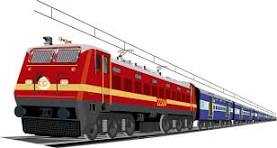The Indian government is still paying the British... just for this one railway line!
The Indian Railways is the largest employee-run company in the world. It is also the largest railway network in Asia and the second largest railway network in the world under one management. Lakhs of trains run across the country from Kashmir to Kanyakumari in the north.
In the 1850s, the then British government laid the track from Bombay to Thane. Although most of the major railway services in India were laid by the British, the Indian government assumed full ownership after independence. Since then India has been bringing modern train services by spending thousands of crores every year.
Not only High Speed Rail, Vande Bharat but also bullet train services are in progress. Apart from that, the railway department is also trying to bring high-speed trains that use magnetic power. Despite this, only one railway line in the country is still under British company. The Indian government is still paying the British for that route. It's true folks.
There is a 190 km long Sakundala Railway between Yavatmal and Murtijapur in the state of Maharashtra. In 1910, the Sakundala Railway was established by a private British company, Killick-Nixon. The Great Indian Peninsular Railway (Great Indian Peninsular Railway), which operated throughout central India during the British rule, operated trains on this route.
Later, when the British railways were nationalized in 1952, only this line was not bought from the company. The railway is still maintained by the same company that laid the tracks in the 19th century. And India is still paying a fee of one crore rupees to the British for running trains here.
As of today, only one tourist train is running on Sakuntala railway line per day. Yavatmal and Achalpur in Amravati district is a distance of 190 km and the toll is higher by road. But the poor people in these two villages cannot afford that expense on a daily basis.
Only for this purpose in 1921 only one train, a ZD-steam engine manufactured in Manchester, was running as the lifeline of these villages. 70 years later on April 15, 1994, a diesel motor was installed to replace the original engine. Today the ticket price for this train is just Rs 150.
Later the Gillick-Nixon Company established the Central Provinces Railway Company in association with the British Indian colonial administration. (CPRC). And the purpose of this Shakuntala narrow gauge railway is to transport cotton from Yavatmal to Mumbai (Bombay). It was then sent to Manchester, England.
Originally a freight train route, it was later converted to a railway to transport people. A staff of 7 currently handles all railway work including signalling, ticket sales, decoupling of locomotives from coaches.
Earlier, former Union Railway Minister Suresh Prabhu had approved Rs 1,500 crore for conversion of Yavatmal-Murtishapur-Achalpur railway line from narrow gauge to broad gauge. But today it is still managed and owned by a British company.
